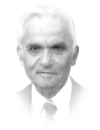Kurds’ paradigm shift in northern Syrian scenario

The month of October has not augured well for the promotion of the Kurdish cause in Syria. First, there was the 13-point agreement between Turkish President Recep Tayyip Erdogan and US Vice President Mike Pence, and then the 10-point Erdogan-Vladimir Putin memorandum of understanding, which halted several projects the US was implementing to promote the Kurdish cause in Syria.
The US has always supported the Kurdish cause. It has done so in northern Iraq by declaring a no-fly zone to prevent Iraqi forces from subduing the Iraqi Kurds. This move helped the promotion of Kurdish autonomy in the north of the country to such an extent that, in September 2017, the Iraqi Kurds organized a referendum to proclaim the independence of Kurdistan. More than 92 percent of the people voted in favor of independence but the international community, including the US, remained ambivalent. Israel supported the referendum but kept silent afterwards.
The US wanted to emulate this experience in Syria and it had several reasons to do so. One of them is connected to the security of Israel, which has always been a major priority for the US. Israel is surrounded by Arab countries. It needs friendly countries beyond its immediate Arab neighbors. The second reason is to use the Kurds as a proxy in Syria’s constitutional process.
Third, every major country that has global ambitions would prefer to hold the Kurdish card in its hand, because there are sizeable Kurdish minorities in four Middle Eastern countries: Turkey, Iraq, Syria and Iran. They may use the Kurdish card as leverage in their relations with these countries.
Fourth, with their population estimated to be between 35 and 42 million, the Kurds are the largest ethnic group in the world not to have their own independent state. The international community feels duty-bound to let them have a state. Finally, the US developed mutual trust with the Syrian Kurds when they cooperated to fight against Daesh, and Washington considered them to be reliable and efficient partners.
These were the main reasons for the strong support extended by the US to the Kurdish cause. However, US President Donald Trump had announced since the early days of his presidential election campaign that he wanted to bring home the US soldiers from the various overseas countries where he thought there was no need to keep them. Syria was one of these areas. Now he is reducing the American military presence in Syria to a residual force that will be sufficient to protect the oil fields. This decision is perceived by the Kurds to be a betrayal after several years of cooperation in the fight against Daesh.
Russia will probably encourage the Syrian government to incorporate the YPG fighters into the Syrian army.
Yasar Yakis
The situation in Syria is still blurred. After Trump’s abrupt decision to withdraw US soldiers from Syria, the Kurds opened negotiations with the Damascus government over potentially integrating People’s Protection Units (YPG) fighters into the Syrian army. If this project materializes, the Kurdish cause will continue to progress on a slightly different path.
Russia — another major actor in Syria — has never withdrawn its support for the Kurdish cause. It allowed the Democratic Union Party (PYD) to open a liaison office in Moscow. The integration of the Kurdish fighters would make the Syrian army stronger on the one hand, while keeping the Kurds strong on the other.
After the Sochi summit of Oct. 22 between Erdogan and Putin, Russia became the major player in northeast Syria. As a country with global aspirations, Russia will not let the Kurds down. It will probably encourage the Syrian government to incorporate the YPG fighters into the Syrian army.
In the blueprint of a constitution for Syria, Russia had incorporated the idea of a cantonal or federal structure that would help promote the Kurdish cause. This idea was reiterated last week by Putin in Erdogan’s presence during the press briefing after the Sochi summit. “A dialogue has to be initiated between the Syrian government and the Kurds living in the north of the country,” Putin said, adding: “It is obvious that the rights and interests of Kurds who constitute part and parcel of the Syrian nation could be protected only through such a comprehensive dialogue.”
Turkey insists that the YPG should withdraw all its weapons from what has now become a “safe zone.” The safe zone is an area 440 kilometers long and 30 kilometers wide along the Turkey-Syria border. A narrow band of 10 kilometers of this zone will be patrolled jointly by Russian and Turkish soldiers and the remainder by the Syrians and Russians.
What will become of the Kurds that are being ousted from the safe zone? The most likely scenario is that their fate will be shaped according to any agreement they ultimately reach with the Syrian government. The irony is that the YPG may put its military capability, which it has gained thanks to US support, at the disposal of the Syrian government — a sworn enemy of the US.
- Yasar Yakis is a former foreign minister of Turkey and founding member of the ruling AK Party. Twitter: @yakis_yasar










































